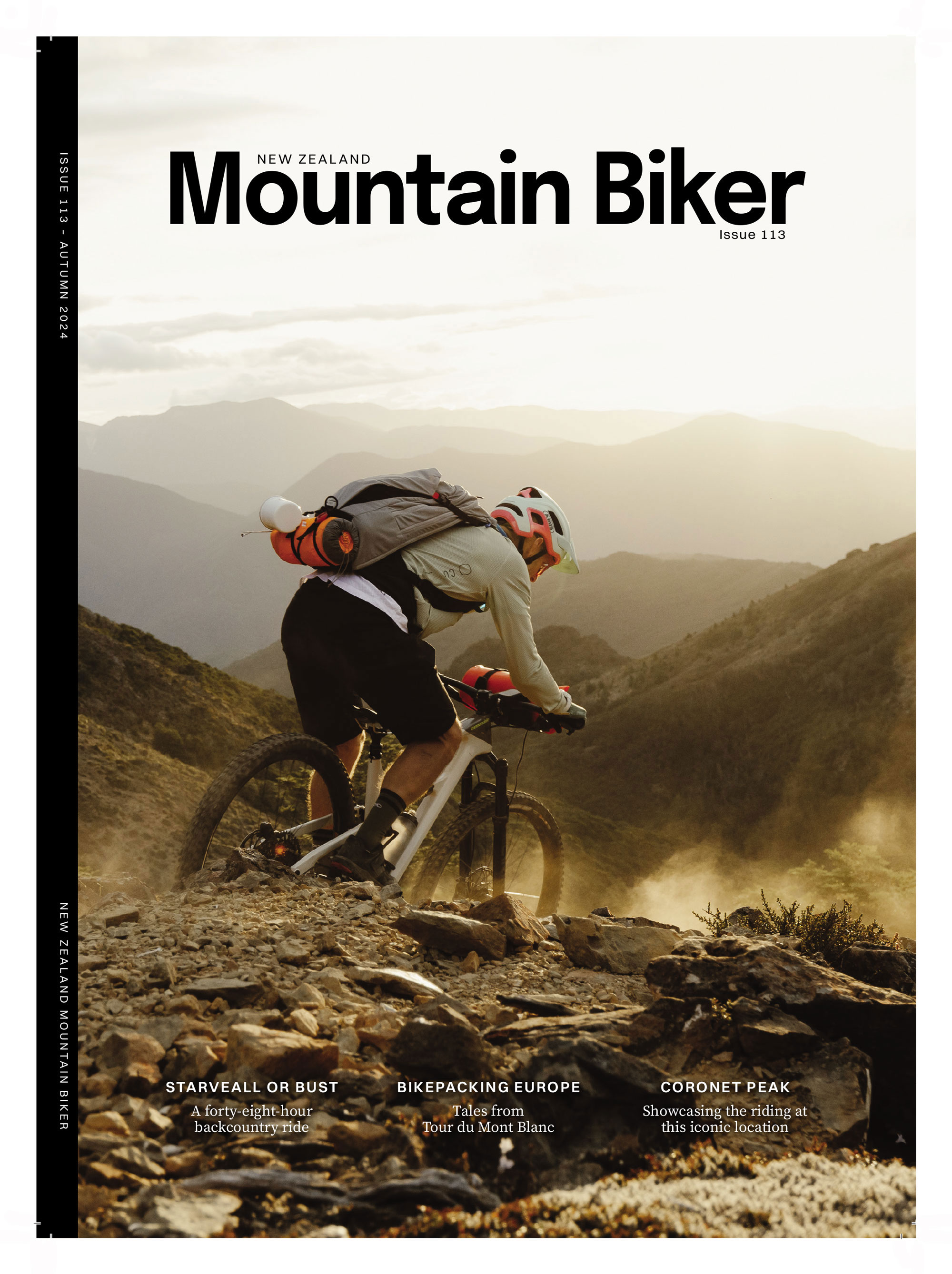Words Georgia Petrie
Images Cameron Mackenzie
RRP $12,499
Distributor Trek NZ
The past two years have been abuzz with exciting product launches for the superlight (SL) eBike nerds among us. Between the likes of Transition, Orbea, Specialized and more recently, Santacruz, the lightweight eMTB market is now a smorgasbord of “too light to be true” offerings. And, with each new bike launch, the discreetness of the “e” factor across the market blurs the line between acoustic and electric even more. Motors and batteries are becoming more compact whilst, simultaneously, the power, torque and range abilities are increasing exponentially, to the point the reliability of my once sharp “eMTB radar” is becoming a little questionable.
Trek’s Fuel EXe takes ’stealth’ to a new level and their alloy offerings combine budget and performance to create an economical yet hard-hitting package that will tempt the appetites of even the purest acoustic bike riders out there – you might want to unblock your ears for this one!
With a chassis deriving from the popular and proven Fuel EX, the Fuel EXe electrifies it’s do-it-all acoustic counterpart, giving riders the ability to do more: turn your post-work lap into two, remove the “dread” from climbs, and descend without the clumsiness of traditional full power offerings. Sporting 150mm front and 140mm rear travel, the bike is a capable descender that’s isn’t afraid of tackling jumps, drops and steep grade five descents far above its paygrade, whilst maintaining nimble-ness at its core. It’s a comfortable, versatile all-rounder that’ll leave you wanting more – and with a punchy 360Wh battery and 50Nm torque motor to boot, why not?!
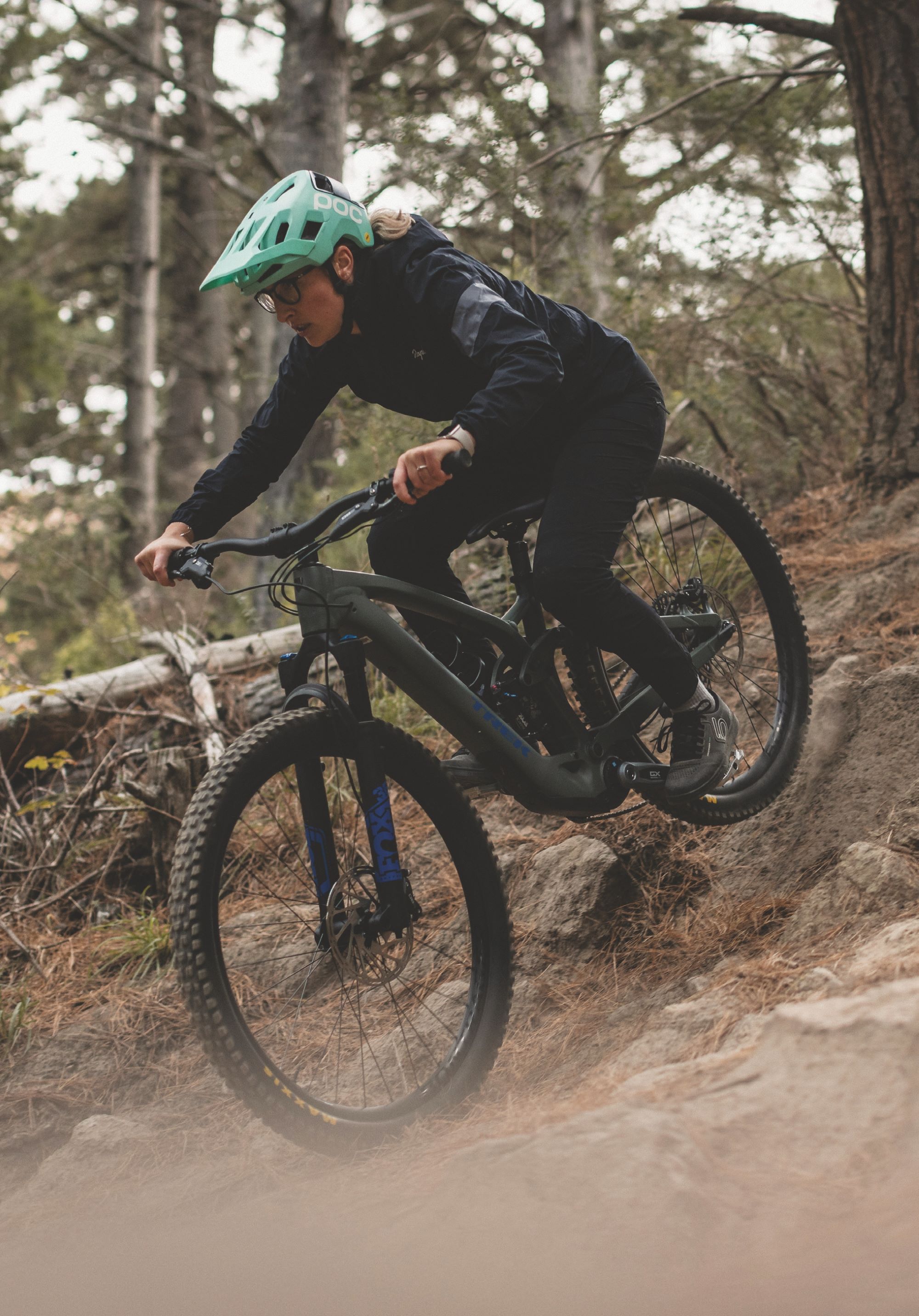
Power is delivered smoothly and naturally – there’s no sudden jerk forward when the assistance kicks in, and it really does feel like you’re just riding a non-powered bike with a little pat on the back for some extra help.
eBike Features
The Fuel EXe is powered by the TQ-HPR50 motor, which has made quite the name for itself within the lightweight eMTB segment, sported by the likes of Mondraker, BMC, Cube and Unno to name a few. Producing 50Nm of torque and 300-watt peak power combined with a 360Wh battery, the TQ-HPR50 is a punchy package – enough grunt to get you up nasty climbs, and enough battery for a decent after-work pedal and then some. Comparatively speaking, these numbers reflect a blend of those seen on competing lightweight offerings. The torque output mirrors the Specialized Levo SL Gen 2 but the Fuel EXE has a slightly higher battery capacity, while the Shimano EP8-RS seen on the Orbea Rise matches the Fuel EXe in battery capacity, but sports slightly higher torque at 60nm.
It’s little wonder the Fuel EXe masks its eBike nature so well, the battery and motor weigh in at just 1.85kg and 1.83kg respectively – our EXe 8 GX AXS T-Type review model weighs in at 20.25kg/44.65lbs, which is very respectable given the bike’s alloy frame, budget friendly componentry and removable battery. Riders can also purchase a 160wh range extender that sits discreetly in the bottle cage, providing an extra one to two hours of juice for only 950 extra grams of weight.
Adding to the sleekness is the TQ display that’s cleanly integrated into the top tube, which can be adjusted to display your preferred units. This is paired with a simple three button handlebar mounted remote, used to toggle between the bike’s three primary modes – Eco, Mid, High and Walk. The max power, assist level and pedal response for each mode (except for Walk) can be tuned using Trek’s Central app, where you can also track ride statistics, activity and even get recommendations on tyre and suspension pressure.
Out of the box, I felt the stock motor tune provided not only efficient, but natural assistance. Having ridden a range of different lightweight and full power eBikes, a key learning I’ve encountered is that whilst two motors might have largely similar numbers on paper, when it comes to power, it’s how that power is delivered that truly differentiates the experiences across the SL offerings. The TQ-HPR50 delivers power instantly but smoothly – instead of the bike jerking forwards with each pedal stroke, it provides a gradual increase in power that’s akin to someone giving you a light push on the back.
It’s also by far the quietest motor I’ve ridden to date, delivering power almost silently and descending with equal quietness – whilst it doesn’t bother me, I’m certainly aware that the decibel level of a motor is quite contentious a topic for some SL shoppers, so this is great news for those not so keen on listening to their bike whirr away whilst pedaling.
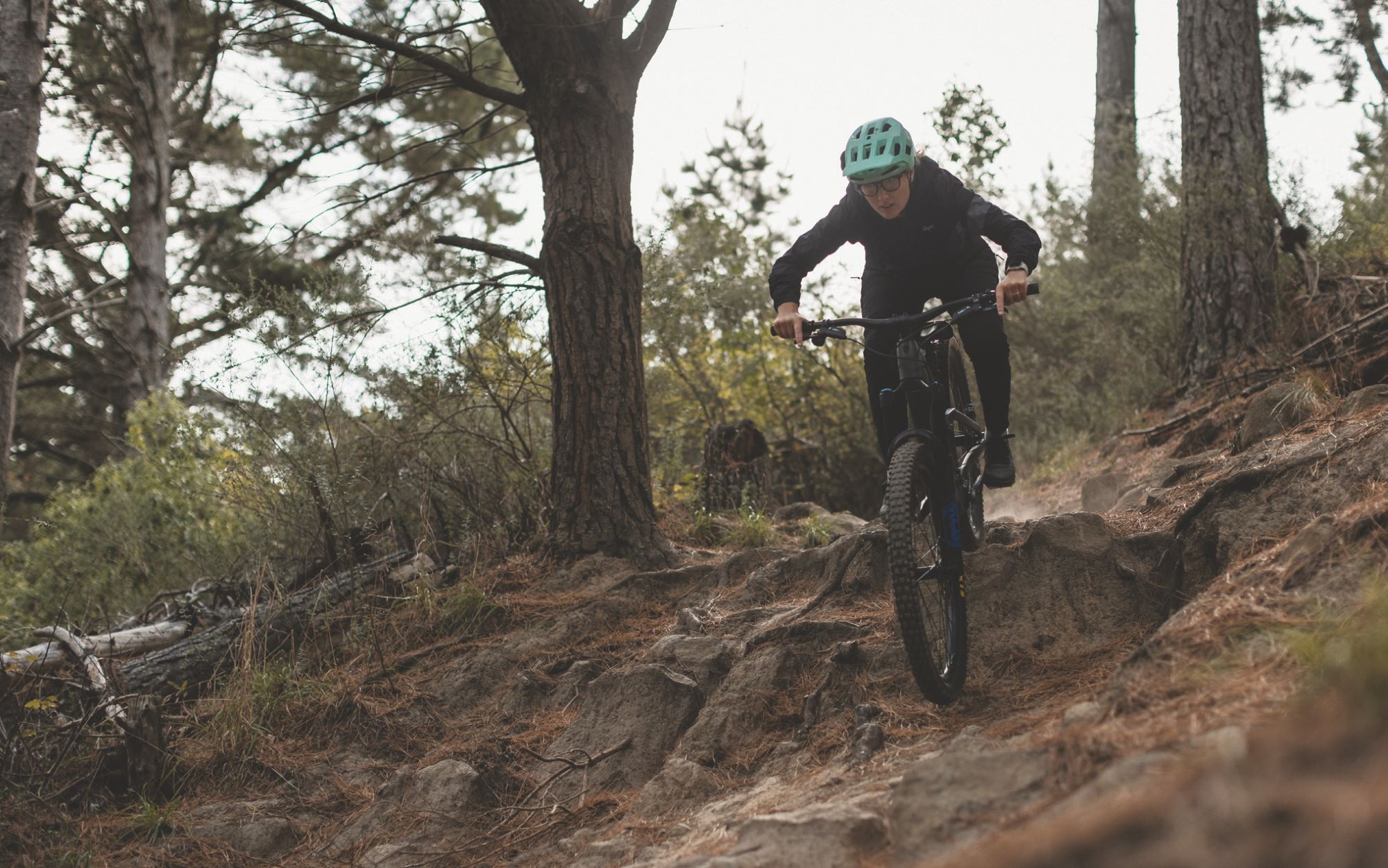
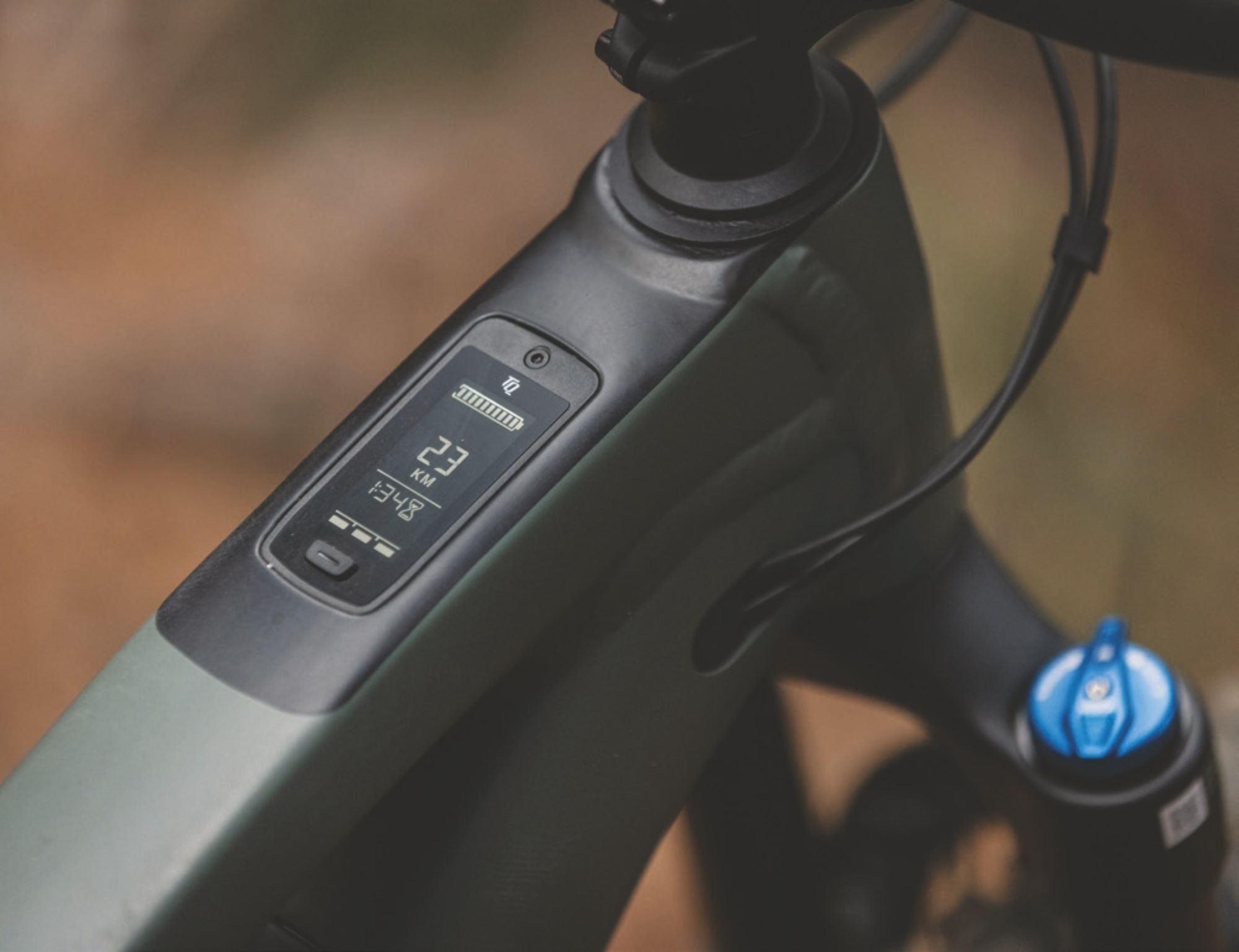
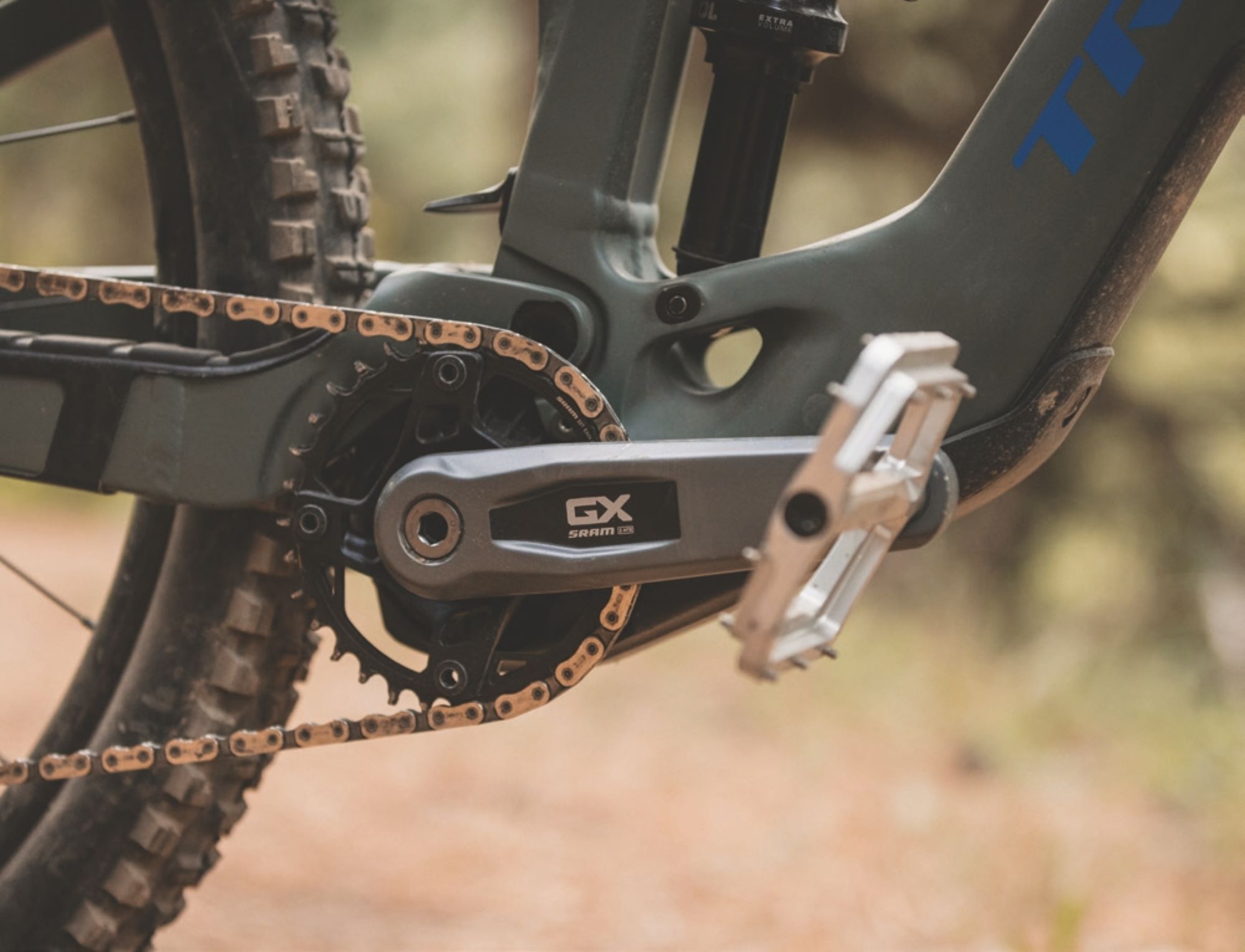
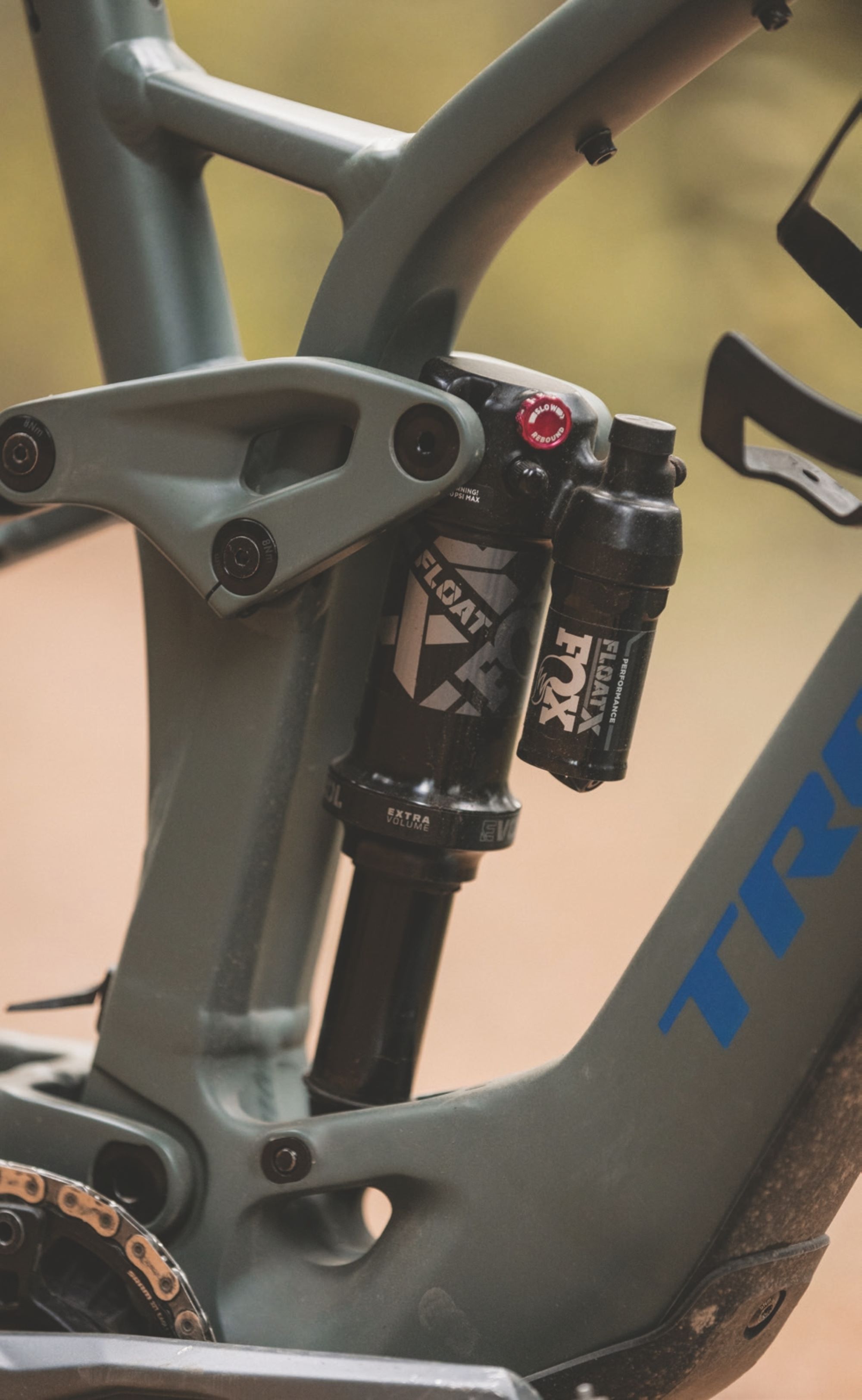
I was highly impressed with the bike’s performance tackling chundery roots and rock gardens, drops and jumps – you’d be forgiven for thinking the bike has 10mm more travel than it really does.
Geometry
The Fuel EXe sports do-it-all geometry that’s “just right” – an aggressive enough 65.3° head angle meaning it doesn’t shy away from steep, technical trails, paired with a 1216mm wheelbase that plants the bike nicely on rough, open terrain, particularly in combination with the damped feeling of the alloy frame. At 77.3°, the seat angle is a welcome addition on a bike that sits in the SL market – this is a touch steeper than competitors such as the Levo SL (75.8°) and Orbea Rise (76.5°), making it a comfortable all-day climber and enabling the front end to remain planted on steeper ascents.
With a wheelbase of 1216mm, the Fuel EXe evokes a sense of stability on wide-open descents – you’ll struggle to feel unstable on this bike or hit the point of ’wobbliness’ that can occasionally be felt on mid-travel range bikes. Paired with a reach of 459mm, the overall size of the bike does feel slightly on the big side relative to other SL offerings, and if you’re in-between sizes, I’d highly recommend swinging a leg over one first. I felt that these characteristics didn’t penalize the bike’s performance, in fact I quite enjoyed the stability and planted feeling that came with the slightly longer bike – overall it felt really balanced and was a confident descender.
Climbing
Now for the nitty gritty stuff – ride performance. Having ridden a range of SL and full powered eMTBs, I was beyond excited to swing a leg over the Fuel EXe – living in Christchurch, we’re fortunate enough to have access to the steeps of Victoria Park, the wide-open flow trails of the Christchurch Adventure Park and the backs and beyond of Craigieburn – an eMTBer’s paradise!
When it comes to overall riding position, Trek have created an excellent balance between a tackle- anything descender, and a comfortable all-day peddler. The steep 77.3° seat angle seats you comfortably, upright and over the bike’s front – you aren’t fighting to keep the front wheel down on steep pitches and it’s extremely comfortable spinning up gradual climbs. The long wheelbase made it a little cumbersome on tight corners – I needed to be quite careful when entering corners and target my lines carefully on technical ascents to ensure I didn’t get too hung up in tight spots. There were a couple of instances where I couldn’t quite make it up the technical switchbacks of my local climb trail – a combination of wheelbase and motor power. I also struggled to get the 150mm Bontranger Line dropper post high enough – if you’re a longer limbed person like me, you may find this a little short, particularly when paired with the bike’s short 73.3mm standover height.
The TQ motor had a unique power delivery relative to other SL motors, such as Shimano’s EP8 or Specialized’s 1.2. Power is delivered smoothly and naturally – there’s no sudden jerk forward when the assistance kicks in, and it really does feel like you’re just riding a non-powered bike with a little pat on the back for some extra help. An interesting observation was that this bike requires quite a high and specific cadence point to generate optimal assistance from the motor – there were a few occasions on steeper climbs where I felt myself having to spin pretty hard to maintain optimal power delivery.
Additionally, whilst the Fuel EXe sports comparatively higher battery numbers than its competitors, the way that power is delivered seems to draw from the battery slightly more than other SL motors I’ve sampled – I ended up with 10% less range on one of my favorite one hour eBike loops than the likes of the Orbea Rise and Levo SL Gen 2. This wasn’t an issue for those quick 1.5 – 2 hour loops from home, but it does mean you’ll need to plan your route carefully should you wish to tackle any slightly longer days in the saddle. As I would with any SL eMTB (depending upon manufacturer), I’d highly recommend purchasing TQ’s range extender which sits perfectly and subtly in the bottle cage, giving you an extra 160wH of battery and alleviating those “range anxiety” moments.
The 12-Speed SRAM GX AXS transmission was an absolute delight, and an excellent drivetrain choice from Trek. I’m a firm believer that wireless drivetrains shine on eMTB’s, particularly those in the SL class, as you’ll often be alternating between motor modes and gears to optimize forward propulsion and power delivery – efficient shifting with immediate actuation makes gear selection a breeze. The bike shifted exceptionally well under heavy load, and I never once had an issue with gears slipping or my chain threatening to drop.
Paired with SRAM’s robustly machined GX cranks, the drivetrain performance makes you forget you’re on the “entry level” alloy model and, at 165mm in length, you’ve got enough clearance to avoid pesky peal strikes, which are much more common on e-mtb’s due to their lower bottom bracket heights. Plus, the Fuel EXe is cleverly designed so that the main battery serves as the derailleur’s power source, meaning you don’t need to worry about remembering to check battery levels. On the flip side, however, it does mean that should your battery run out during a ride, you won’t be able to change gears, which could mean a long ride home or back to the car for some – these bikes are light, but trust me, you’ll still know about it when the battery dies!
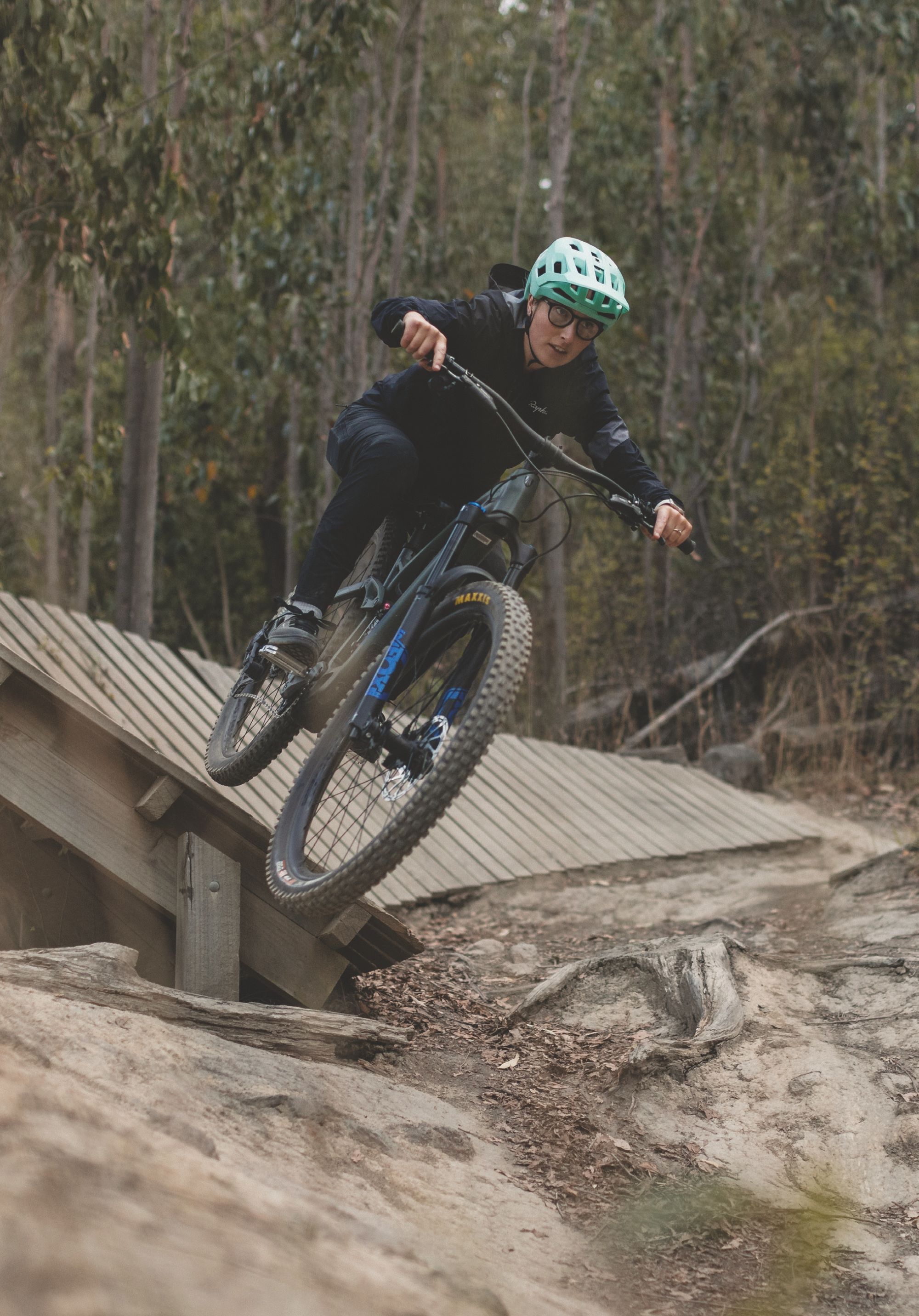
If you’re like me and a busy schedule means limited riding, this bike enables you to cover ground much more efficiently whilst still getting a great workout in, meaning you get to ride more, especially the best parts – the descents!
Descending
Descending, the Fuel EXe comes alive. It excels on wide-open descents, maintaining a planted, compliant feel and isn’t intimidated by big rocks, or venturing into Grade 6 trails. I was highly impressed with the bike’s performance tackling chundery roots and rock gardens, drops and jumps – you’d be forgiven for thinking the bike has 10mm more travel than it really does. The alloy frame strikes a nice balance of being stiff without losing feel of the terrain beneath you, and the wheelbase creates stability that evokes a certain level of confidence over and above other bikes of this travel range.
The Fox 36 Rhythm was a breeze to set up, and the added GRIP dampener helped with small-bump sensitivity – hitting drops and jumps was akin to lounging on a Lay-Z-Boy. It’s plush and the bike really sits into the travel on big hits – one may think, “bold bruiser” as opposed to “nimble dancer” when characterizing the ride feel, which isn’t a bad thing at all on the right trail – this bike has got your back! Whilst more of a “point and shoot” descender that’s perhaps not as responsive as other SL options, such as the Levo SL or Orbea Rise, the Trek tackled my local Christchurch steeps and rock gardens with ease, making light work of trails that, in theory, should be well beyond its paygrade.
The Fox Float X Performance series shock is the perfect complement to the 36 fork – these shocks pack some serious punch and tackle small bump sensitivity with ease, and the dampening is just superb. In my experience, with its stoic build and piggyback reservoir, The Float X considerably elevates the descending performance of any do-it-all mid-travel trailbike, and its extensive adjustability means that it can be tuned out-of-the-box to a wide variety of rider types and terrain.
The SRAM DB 8 4-piston brakes were new territory for me but fitting for the Fuel EXe, self-described by SRAM as being “simple” and “robust” – a perfect complement to the bike’s tough, sturdy characteristics. Whilst initially hopeful as I set off on the first descent, a mellow tech-blue trail at Christchurch Adventure Park, the powerful bite that I experienced at the start of the trail quickly faded and unfortunately left my hands pretty cramped at the trail’s end as I was pulling hard to try and control my speed. Although the Fuel EXe’s beefy 200mm rotors and large levers were an uncommon, but welcome choice for an SL eMTB, these features weren’t quite enough to offset the limited braking power that the DB8’s offered on longer, or steeper descents, and I would’ve preferred something with a little more bite. Undergunned brakes are not unique to the Fuel EXe – brakes are a component that often leaves a lot to be desired when it comes to many of the out-of-the-box eMTB’s; SL or full power, that I’ve ridden thus far. Due to the extra weight of the eMTB, decent stopping power plays a crucial role in how the bike feels, and underpowered brakes can make a bike feel cumbersome and arduous, which is particularly noticeable on an SL eMTB like the Fuel EXe, where you want to bridge the gap between acoustic and electric, not extend it.
Being a longer limbed person, my only gripe when descending was the 150mm Bontrager Line Dropper, which I found to be a little in the way – a slightly longer 170mm drop option would’ve been a welcome addition. We also found the cable actuated dropper post lever to be a little fragile, with the cable detaching from the mechanism on a couple of occasions, rendering the post unusable trailside. On both occasions, remediating the issue unfortunately required no option other than to drop the motor out (a finnicky job, to say the least!) to reconnect this. Routing non-electronic dropper posts is a cumbersome exercise across the eBike board, so this isn’t unique to the Fuel EXe, however, it does mean that ideally the spec’d dropper post should be as reliable and trouble-free as possible to avoid any technical headaches!
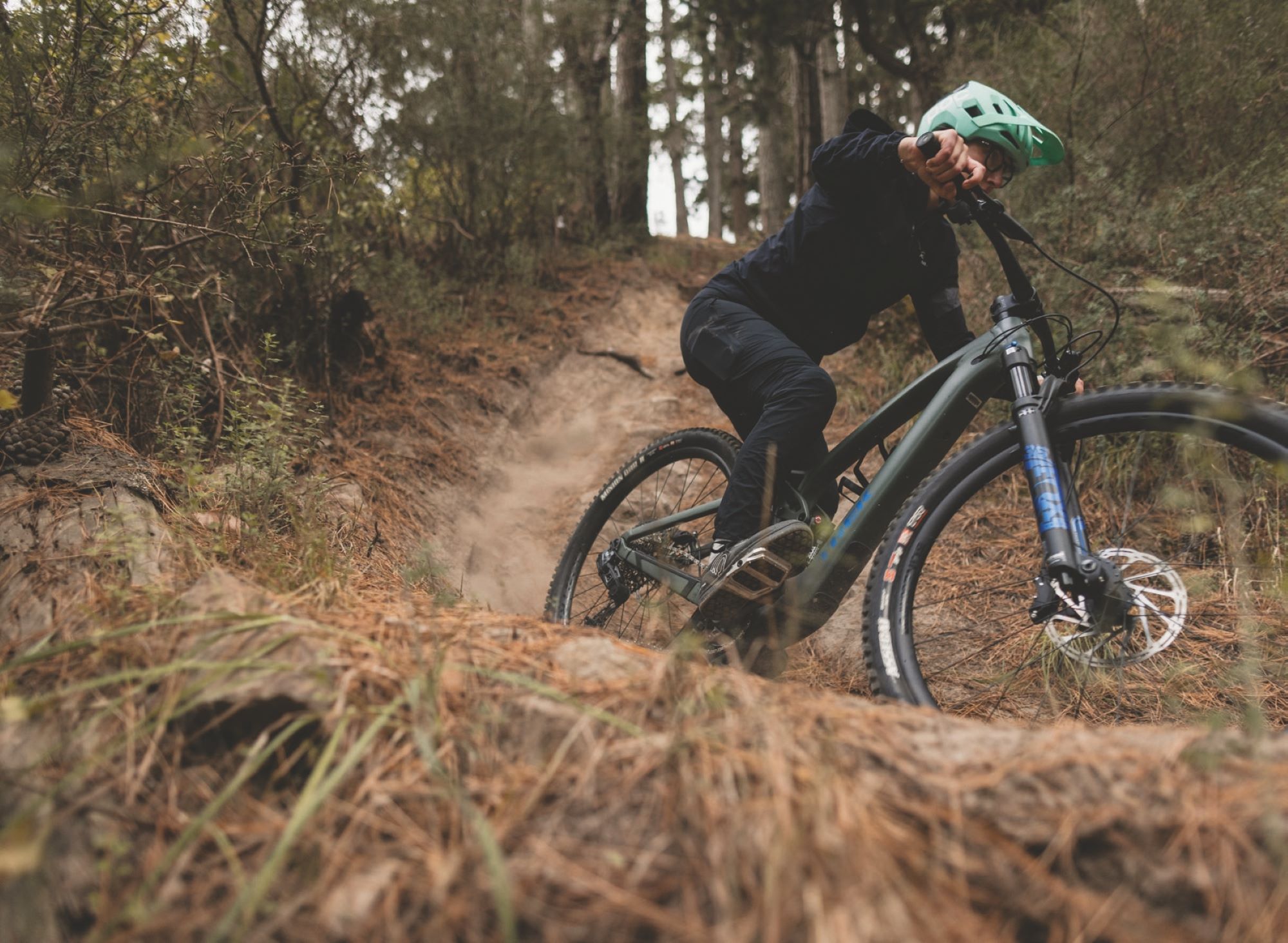
Overall thoughts
The Fuel EXe is an excellent out-of-the-box package that represents great value for money and delivers a ride experience that packs a punch, especially on the descents. With its quiet motor, subtle assistance and stealthy appearance, the bike is a great stepping stone into the wonderful world of eMTB for those wanting to get the most of their ride, whilst maintaining the maneuverability, handling and responsiveness of an acoustic bike.
So, who is this bike for? If you’re on a tight schedule and you’re wanting to squeeze as much riding as possible into a short space of time, this bike is for you. Or perhaps, if you’re looking for a ride experience that mirrors that of your acoustic bike as closely as possible, this bike is for you. If you’re a weekend warrior who often ventures out to the mountains for multi-hour or multi-day backcountry adventures, then this bike perhaps isn’t for you, although the Fuel EXe’s range extender does provide a considerable amount of range anxiety alleviation, depending upon the duration and terrain of your routes.
Whether or not the Fuel EXe is for you depends on the type of riding you’re doing, the type of rider you are and, realistically, how long you often ride for. For me, I loved that the Fuel EXe meant the difference between fitting in a decent ride and not riding at all. If you’re like me and a busy schedule means limited riding, this bike enables you to cover ground much more efficiently whilst still getting a great workout in, meaning you get to ride more, especially the best parts – the descents! Because who doesn’t want to ride their bike as much as possible, right?
